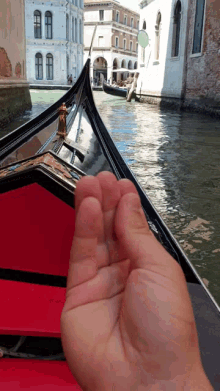The first part of this review is a brief summary of Dante’s Inferno, the source material of the game. If you’re here purely for the board gamer critique, skip down a little bit to see my impressions of the game. But beware- you’re missing out on some juicy 14th century drama.
What I knew about The Divine Comedy prior to reading it was that it was an exquisite work of literature, considered by many to be the finest epic poem ever written. What I DIDN’T know about The Divine Comedy is that it is actually a 14th century hit piece on all the Florentines Dante hated. If you made any kind of splash in Florence’s political scene, you could bet on two things: Dante was writing you into his poem, and you were not going to like where he put you.

At first, I wanted to see how much I could get on my own without knowing why Dante’s neighbor’s brother’s dog’s frenemy was upside down in a hole burning in Hell. But it turns out you really do need a history lesson to follow along. Without context, you’re adrift in a sea of obscure references, and it’s easy to lose the thread of Dante’s vendettas. That same need for context echoes in Inferno, the board game. Unless you know about the Guelphs and the Ghibellines, you’re gonna be a little confused as to why there’s a siege happening in Florence at the same time that you’re trying to accuse, execute and damn souls to Hell. And if you’ve read Dante’s Inferno, you’re gonna be a little confused as to why you’re accusing, executing and damning souls to Hell.
But here in the board game business, are we really all that concerned with fictional accuracy? Mmm…yes and no. Inferno is a fun board game and apparently Hell really appeals to me because I loved moving those souls down through each circle.

But does it capture the gravitas of its source material? Not quite. And that leaves me torn.
Dante’s Divine Comedy really is a stunning work of art. At least from the point of view of a casual reader like myself. Its opening line—“Midway on the journey of our life, I awoke to find myself alone and lost in a dark wood, having wandered from the straight path”—has a timeless resonance. The story chronicles a spiritual awakening, beginning from the point of Dante’s deep depression, and guided by Virgil, the ancient Roman poet. Dante is having a midlife crisis and Virgil essentially tells him, “I’ve got good news and bad news. The good news is there’s a way out of this crisis. The bad news is we have to go through Hell first.”
What’s interesting is Hell is an inverted cone shape that goes down, down, down and gets narrower and colder the further down you go- Dante’s symbol of how sin, by turning away from God, limits and constrains the soul. Dante confronts the sufferings of the damned as a mirror of his own moral failings.
At one point, he sort of faints and Virgil kicks him saying “Look! You have to see what’s the matter!” He does a searching moral inventory of his life, not leaving anything out. When he finally gets to the bottom of Hell, he finds Satan, stuck in the ice and weeping. He has these giant bat wings and as they beat the air over the ice, they make everything around them colder, underscoring his point that sin is not this hot, passionate, exciting thing at its core. It’s sad and empty and cold because it has moved away from Light itself.
Now, all this summary is not to tell you how to live or what to believe about heaven and hell. It’s just to say that I picked up this book at a point where I was in my own “dark woods,” and I had an appreciation as great as any that I’ve ever had, of the intersection between what I was living and what I was reading.
At a time when I was feeling the pain of the world pretty acutely, Dante showed me the usefulness of self-knowledge, precisely at the time it was hardest to look. And all at once, both the world and my existence in it became simultaneously palpable and bearable. This book is a scaled down version of life, a bite-sized piece that we can pick up and chew and use to find our way back to the straight path.
So this is the setting we’re workin’ with here. Enough yada yada. Let’s get on with the board game now.

Learning Inferno is a bit of a hurdle. The individual actions don’t seem to connect until you’ve played a few rounds, at which point the strategy becomes clearer. I personally enjoy games like this—the ones that take time to click—because the payoff is satisfying. It also makes the strategy less obvious, rewarding deeper exploration.
Hell Phase
On your turn, you alternate between two phases: the Hell phase and the Florence phase. During the Hell phase, you either move a soul into Hell from the graveyard or move a soul already in Hell closer to its appropriate ring (matching its color). The souls are neutral—no one “owns” them—so they’re up for grabs. If other souls block the path, you can jump over them, potentially moving them further, but a soul can never advance past its destination ring. When you successfully move a soul to its correct circle, you lay it down and score points for that circle. The catch? The path the soul takes determines your actions in the Florence phase.
Thematically, the visuals shine here. Hell is depicted as a spiraling descent and moving souls down here feels appropriately grim, with the board depicting more and more ice the further you descend.
Florence Phase

The Florence phase, in contrast, feels disjointed. In this phase, you choose one of eight worker placement actions based on where your Hell phase left off. Then, you may accuse a sinner, provided the color of the sinner matches the location of one of your workers. Accusations advance you along the sin track at the bottom of the board, which determines most of your endgame points.
Each accusation also moves Dante further along a track, acting as a game timer. As Dante progresses, players lock in scoring for each sin circle. For instance, when Dante passes the first purple diploma site (I honestly don’t know why it’s a “diploma”), whoever is highest on the purple sin track places their diploma there, securing those points scored at the end of the game. If you don’t have a diploma, you miss out on those points entirely.
The game layers several interlocking mechanisms, creating a deep, rewarding puzzle. The Guardians (standees or minis) add even more depth. Each Guardian brings unique abilities, from turning souls to stone to creating shortcuts through Hell, introducing new strategic wrinkles and replayability.
Thoughts
One potential drawback is how players interact during the Hell phase. Moving souls can become a game of chicken—if you move a soul close to its goal, the next player might score those points instead. This often results in stalemates, possibly particularly at the 2 player count, where fewer players are competing for the same souls. But that last part is total speculation as I did not play at 2 players.

What eventually breaks the gridlock is the endgame scoring: each empty space in a sin circle reduces your points, creating a sudden urgency to fill them, even at a strategic cost. I actually found all this to be quite fun, trying to scope out ways to break through and score. And the Hell phase really delivers on the iconic descent we all showed up for.

The Florence theme is just disappointing for me. They took all the political intrigue of Florence and decided to distill it down into a vaguely relevant worker placement. While it adds depth to the game, it detracts from the theme. Instead of weaving a compelling narrative of sin, corruption, and damnation, it plays like a detached euro engine.
Florence was deeply tied to who Dante was but this doesn’t illustrate that. Imagine if Florence allowed players to scheme against one another, representing Dante’s critiques of his contemporaries- actions could lead to rivalries, betrayals, and ironic twists as players jockey for power, only to see their workers damned for their sins. The theme practically begs for a system where sin and punishment intertwine more directly.
The game walks an odd line between embracing the silliness of its premise and trying to be serious. Moving pieces through Hell is inherently absurd (in the best way) and the game might have benefitted from leaning into this absurdity with more player interaction- perhaps allowing players to damn each other’s workers or turn sins into strategic advantages. Alternatively, it could have pursued a more reverent tone, with mechanics reflecting moral dilemmas and hard choices. As it stands, it doesn’t fully commit to either, leaving the Florence phase particularly flat.
All of this sounds quite negative but the truth of the matter is that I really enjoyed playing the game. Inferno is a solid Euro with crunchy mechanics. It’s fun and rewarding even if it doesn’t capture the essence of Dante’s masterpiece. The mechanics are solid, and the Hell phase delivers that grim, macabre fun we all signed up for. But Florence feels like it wandered in from a different game entirely. If you love Dante, you might find yourself wishing for more thematic depth. If you don’t, you’ll still enjoy the rich gameplay—but be prepared to occasionally glance at the board and think, “Wait, why are we doing this again?” Either way, it’s proof that even a trip to Hell can be a good time…if you bring the right friends and a good imagination.

Presentation
+gorgeous game board
+beautiful components and the metal coins are really nice if you splurged
+clear, easy to read
-table hog
Getting It Played
-the teach is complex due to many interlocking mechanisms
+- probably best at 3-4 players
Gameplay
+crunchy decisions
+the Hell area control zone keeps you engaged during others turns
+plenty of replayability, especially with the many Guardian options to change things up
-theme just isn’t quite what it could be
Fun Factor
+-lots of player interaction, some of it taking the form of a game of “chicken”
+-Hell zone is a lot of fun and Florence mechanics work great, just don’t fully work with the theme
+play time was about 2-2.5hours each session and never dragged
Excited to try this one. I walked by it a few days ago at PAX Unplugged and when I went back to buy it, it was sold out!